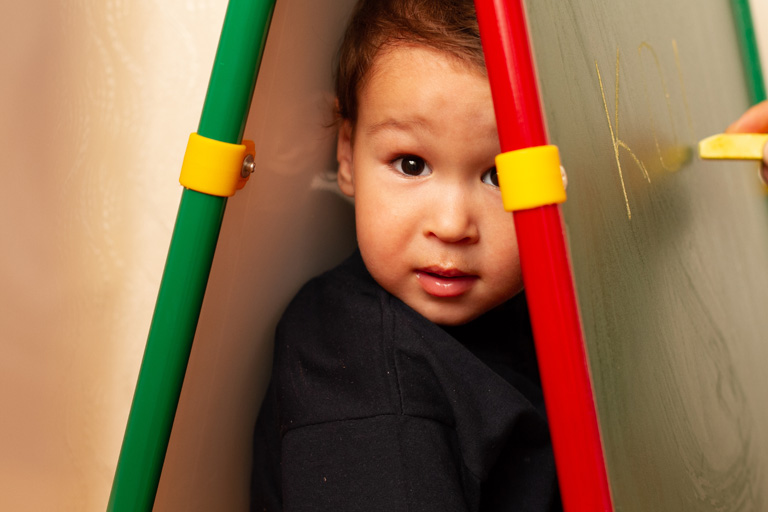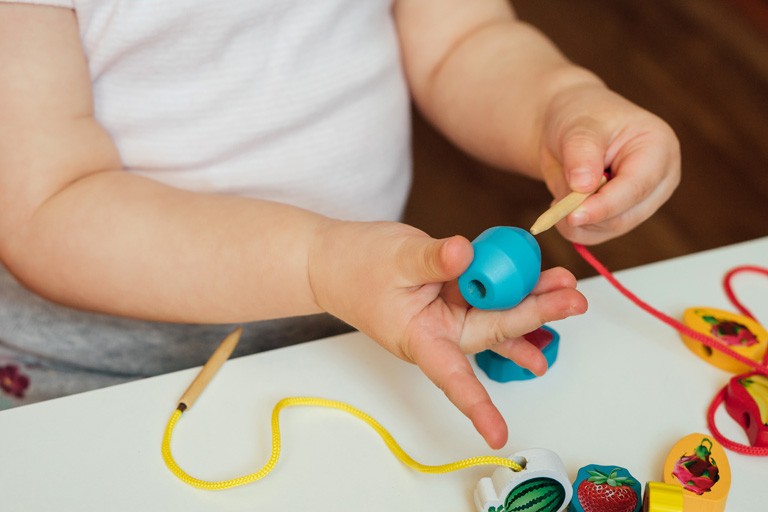
Help, My Toddler Won’t Stop Screaming!
February 19, 2024
Brain Plasticity and Early Childhood Development
April 11, 2024Spring is Coming – Seasonal Allergies in Toddlers
As winter loosens its grip, spring brings warmer weather, blossoming flowers, and the lush green of new leaves. However, this seasonal transformation brings a less welcome guest: seasonal allergies.
For toddlers, who are just beginning to explore the world around them, this season can be particularly challenging. Seasonal allergies, medically known as allergic rhinitis or colloquially as hay fever, affect a significant number of young children.
With the air rich in pollen from blooming flora, it’s essential for parents to understand what this means for their young ones and how to navigate the season with minimal discomfort.
Understanding Seasonal Allergies in Toddlers
Seasonal allergies often seem at their worst during spring. This is when trees and flowers begin to bloom, releasing pollen into the air.
For toddlers, these allergens can trigger a series of immune responses, leading to the uncomfortable symptoms associated with allergic rhinitis. Despite affecting an estimated 7.1 million children in the United States, the impact of allergies on toddlers can often be overlooked.
This is partly because children under two are less likely to develop a noticeable allergies. However, for those toddlers who do show symptoms, the experience can be distressing.
Allergic rhinitis represents the body’s exaggerated response to foreign particles like pollen. When these particles enter the eyes, nose, and throat, they can trigger the immune system to release histamines, leading to the irritation characteristic of seasonal allergies.
For kids, the incidence of seasonal allergies climbs with age, peaking around school age. This developmental aspect underscores the importance of awareness on the part of parents and caregivers. Recognizing the signs of seasonal allergies early can lead to more timely and effective management of symptoms, thereby reducing the overall impact on your child’s well-being.
Identifying the Signs of Seasonal Allergies
Understanding the signs of seasonal allergies in toddlers is important, because they may not be able to articulate what feels wrong. It’s up to parents to notice the signs. The most common indicators include:
- Stuffy or Runny Nose: A clear, watery discharge from the nose is often the first sign of seasonal allergies, accompanied by frequent sneezing.
- Itchy, Watery Eyes: Toddlers may rub their eyes more often due to discomfort, leading to redness and swelling.
- Sneezing and Itchy Nose: These are reflexive responses to the irritation in the nasal passages and throat.
- Coughing and Sore Throat: Postnasal drip can cause a persistent cough and a sore throat, which can be especially troublesome at night.
- Dark Circles Under the Eyes: Often referred to as “allergic shiners,” these are caused by congestion in the small blood vessels beneath the skin.
Recognizing these symptoms early is the first step towards providing relief for your child. Seasonal allergies can mimic a cold, but if you notice that these symptoms recur annually or last for an extended period, allergies are likely the culprit.
The Impact of Seasonal Allergies
The effects of seasonal allergies extend beyond physical discomfort, impacting various aspects of a toddler’s life. Let’s take a look:
- Fatigue and Poor Concentration: Allergies can disrupt sleep patterns, leading to fatigue and difficulty concentrating.
- Increased Risk of Infections: Frequent rubbing of itchy eyes and nose can introduce pathogens, leading to an increased risk of ear and sinus infections.
- Asthma Increase: For toddlers with asthma, exposure to allergens can trigger more frequent and severe asthma attacks.
- Behavioral Issues: The discomfort and lack of sleep caused by allergies can lead to irritability and behavioral changes, affecting interactions with family and peers.
By addressing the symptoms of allergies, parents can help mitigate these consequences, ensuring that their toddlers can enjoy the vibrant seasonal changes with minimal discomfort. Remember, your child’s Pediatrician is well-equipped to evaluate and manage common health concerns in children, including the initial assessment of allergy symptoms. your pediatrician can then refer you to an allergist as needed.
Minimizing Exposure and Treatment
To keep seasonal allergies at bay, minimizing exposure plays an important part, alongside treatment.
Simple steps can significantly reduce a child’s contact with pollen, such as having them wash their hands and face immediately after playing outside to remove pollen. Keeping windows closed in your home and car to prevent pollen from entering, using air conditioning with a clean filter, and drying clothes indoors rather than on an outdoor line are also effective strategies. Additionally, bathing children at bedtime can help remove any pollen that has accumulated on their body and hair throughout the day, contributing to a better night’s sleep.
When it comes to treatment, a combination of avoiding allergens and using medication can provide relief from symptoms. Safe and effective allergy medications are available, including oral antihistamines, nasal sprays, and eye drops, which can target specific symptoms.
It’s important to consult with a pediatrician to choose the most appropriate treatment, as they can recommend the best options based on your child’s age, symptoms, and overall health. For instance, nasal saline sprays can be beneficial for relieving nasal congestion, and certain antihistamines are preferred due to their effectiveness and minimal side effects.
Indoor Activities for Bad Allergy Days
When outdoor fun becomes a challenge for toddlers with allergies, turning to creative indoor activities can ensure they remain engaged and entertained.
Reading provides a wonderful escape; a stack of children’s books can transport little minds to faraway places without stepping outside. Additionally, setting up a game day with a variety of board and card games can transform a day indoors into an exciting adventure. The revival of board games offers depth and complexity that captivate not only children but also adults, making it an excellent way for the whole family to spend quality time together without the worry of allergens.
On days when the pollen count is particularly unforgiving, turning to crafts, indoor painting, or even simple kitchen tasks can keep little hands busy. Activities for 2-3 year olds like pom pom sorting or straw threading encourage fine motor skill development while providing a fun challenge.
- Pom Pom Sorting: A colorful and engaging activity where toddlers sort small, fluffy pom poms into containers based on color, size, or other categories. This activity helps develop fine motor skills and color recognition.
- Straw Threading: Involves cutting plastic straws into pieces and having toddlers thread the straw pieces onto pipe cleaners or string. This activity enhances hand-eye coordination and fine motor development while also teaching pattern recognition and sequencing.
These indoor activities not only keep toddlers safe from allergens but also foster an environment of learning and creativity, ensuring they continue to grow and explore even on days when the great outdoors is off-limits.
Spring Allergies Don’t Have to Keep Your Toddler Down
Navigating the challenges of high allergen days doesn’t have to be overwhelming. By minimizing exposure to pollen, using appropriate medications, and incorporating indoor, parents can ensure that their children remain engaged, entertained, and safe from the worst of allergy season.
With a little creativity and planning, parents can turn potentially frustrating days into opportunities for learning and bonding, making every day a chance for discovery and growth, regardless of the pollen count.
Early Intervention Therapies
If you have been worried that your toddler is not meeting their developmental milestones and your gut is telling you they may need more support, TEIS Early Intervention can help you get answers.
If you have concerns, ask your pediatrician about Early Intervention therapies from TEIS Early Intervention.
At TEIS Early Intervention, our therapists listen to your concerns, assess your child’s individual needs, develop a customized treatment plan, and coach you along the way on simple routine-based solutions to maximize your child’s development in their natural environment.
Early Intervention evaluations and therapy services are available under the Federal Early Intervention Program for Infants and Toddlers with Disabilities. Before services can be provided, an independent evaluation of your child must be completed. To assure impartiality, one agency offers evaluation services while another provides therapeutic services.
To schedule an evaluation, call 1-800-692-7288 or email to help@connectpa.net



 Send to a friend!
Send to a friend!


